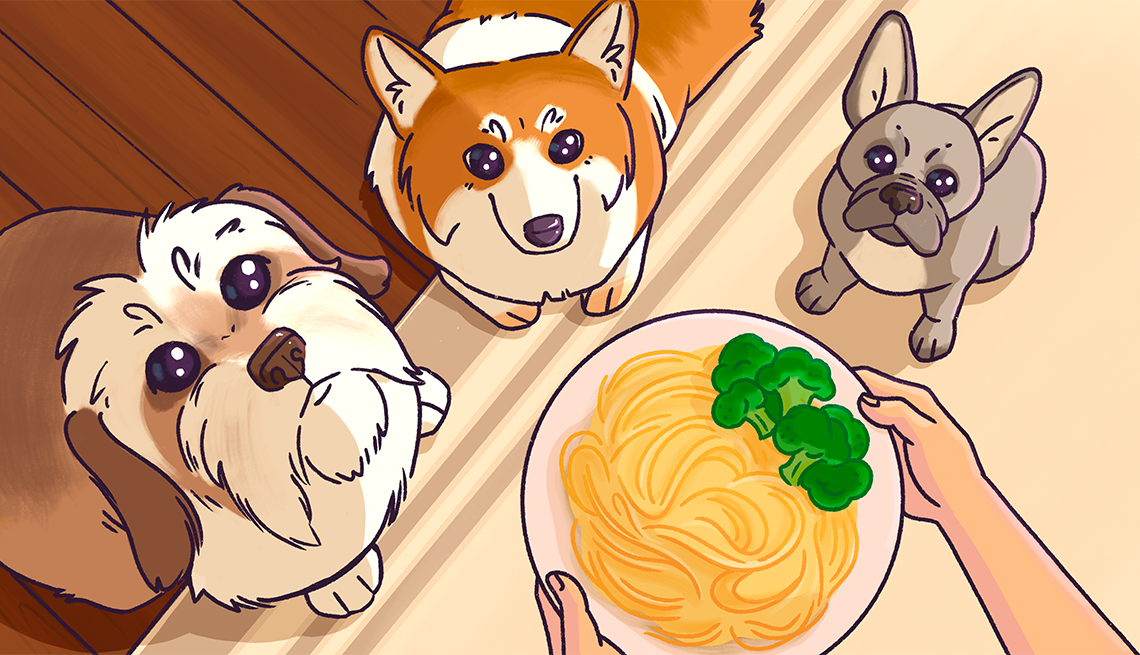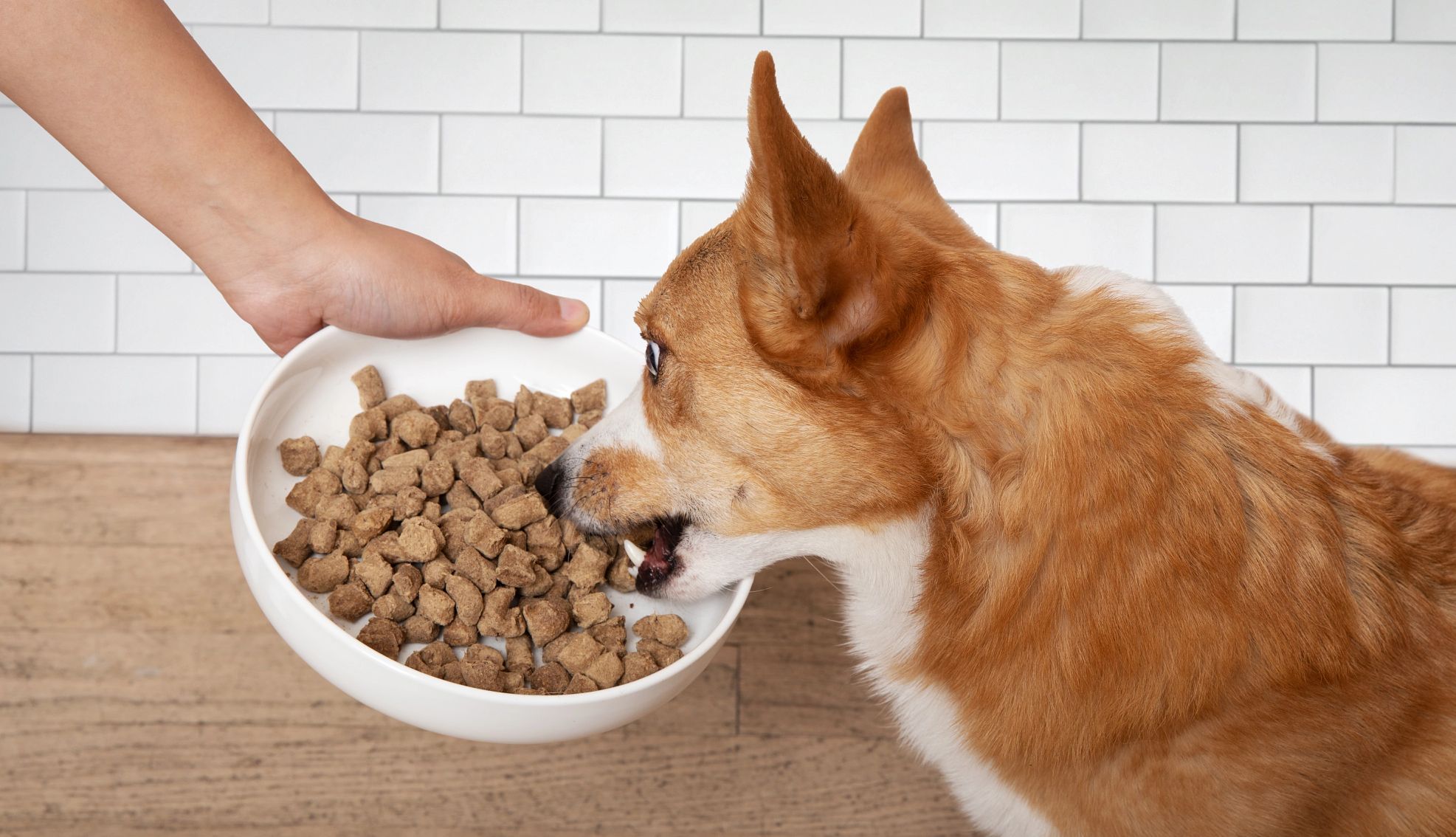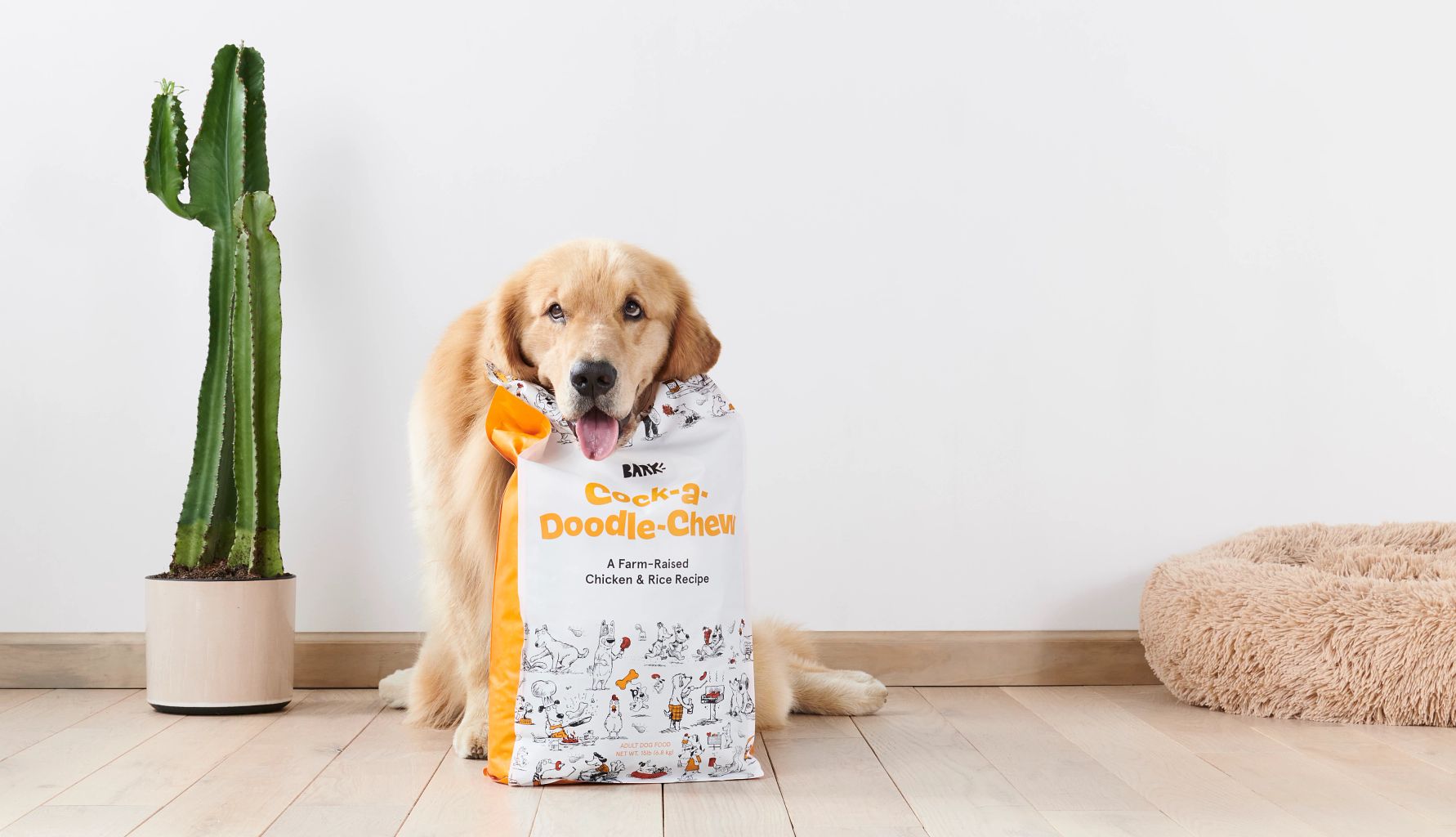AARP Hearing Center


You might give Fido your dinner scraps — secretly under the table or maybe scraped into his bowl — as a special treat. But is human food actually good for your pet? If you are one of the 86.9 million U.S. households with pets (25 percent of them are Gen Xers and 24 percent are boomers), then you need to know how to keep your dog healthy and safe.
The answer, say experts, is that while some human foods are just fine — and can even offer significant health benefits to your fur baby — other foods might send your pup to the emergency vet.
So before you let Fido lick the plate clean, here’s a guide to what the experts say about feeding human food to your dog: What human foods are OK | The right portion size | What human foods are dangerous to your dog | Human-grade dog food on the market | Are kibbles still OK?


An apple a day — and other dog-friendly options — can keep the vet away
For dog parents who want to optimize their pet’s nutrition, introducing human foods as treats and meal toppers can be a good place to start. And most foods are OK.
“With very few exceptions, your dog will thrive on the same healthy foods you enjoy,” says veterinary homeopath Jan Allegretti, founder of Holistic Animal Health and Advocacy and author of The Fresh & Flexible Meal Plan: The Easiest, Most Nutritious Way to Feed Your Dog and Cat.
What, specifically, can you feed your Fido? The veterinarians interviewed for this piece agree that the following “human” foods are generally safe for dogs.
- Fruits: Apples, applesauce, bananas, blueberries, peaches, strawberries, watermelon
- Meat: Chicken, duck, turkey, beef, veal
- Other proteins: Eggs, salmon
- Vegetables and legumes: Broccoli, cucumbers, carrots, green beans, lima beans, spinach, zucchini, potatoes, sweet potatoes, peas
- Nuts/seeds/grains: Flaxseed, oatmeal, peanut butter (without xylitol), pasta, rice, popcorn (no salt)
Exactly how much human food should you give them?
What should you do if your dog does eat something toxic?
If your dog ingests something they shouldn’t, call your veterinarian immediately. “For most of the foods listed here, there is a threshold amount — usually dependent on the weight of the dog — that becomes a medical emergency. So if your dog does get ahold of a toxic food, give your vet or poison control a call to see if they need urgent medical care or just monitoring at home,” says Margo Hennet, a veterinarian at BARK, a pet-product company.
The Pet Nutrition Alliance, a global collaboration of nine veterinary organizations, has an online calculator to help you track your pet’s daily calories. If you have a 60-pound Labrador retriever, for example, it’s recommended that it eats approximately 1,200 calories per day.
If you’re using human food along with kibble — as a treat or topper — it should constitute no more than 10 percent of a dog’s daily calories, according to Danielle Opetz, a doctor of companion animal nutrition at pet food company Fromm Family Foods. That means that Lab could have roughly 120 calories’ worth of treats — for example, half a banana (50 calories), a few baby carrots (20 calories) and a half tablespoon of peanut butter (50 calories).


Smaller serving size. Keep in mind that whole foods tend to be more digestible than processed foods, which means dogs may require smaller servings to satisfy their nutritional needs, says veterinarian Brett Levitzke, chief medical officer at Get Joy, a maker of fresh, human-grade dog food. Eating too much can lead to weight gain and obesity, he notes.
































































You May Also Like
Make Life Easier with These 25 Practical Tips
Try these life hacks to save time and simplify your day
Wake Up More Refreshed With Our Smart Guide to Sleep
43 tips to help you fight those restless, endless nights and get the slumber you need
AARP Smart Guide to Keeping Your Memory Sharp
22 science-backed ways to growing a healthier, happier brain, now and in the future
AARP Members Only Access
Enjoy special content just for AARP members, including full-length films and books, AARP Smart Guides, celebrity Q&As, quizzes, tutorials and classesRecommended for You